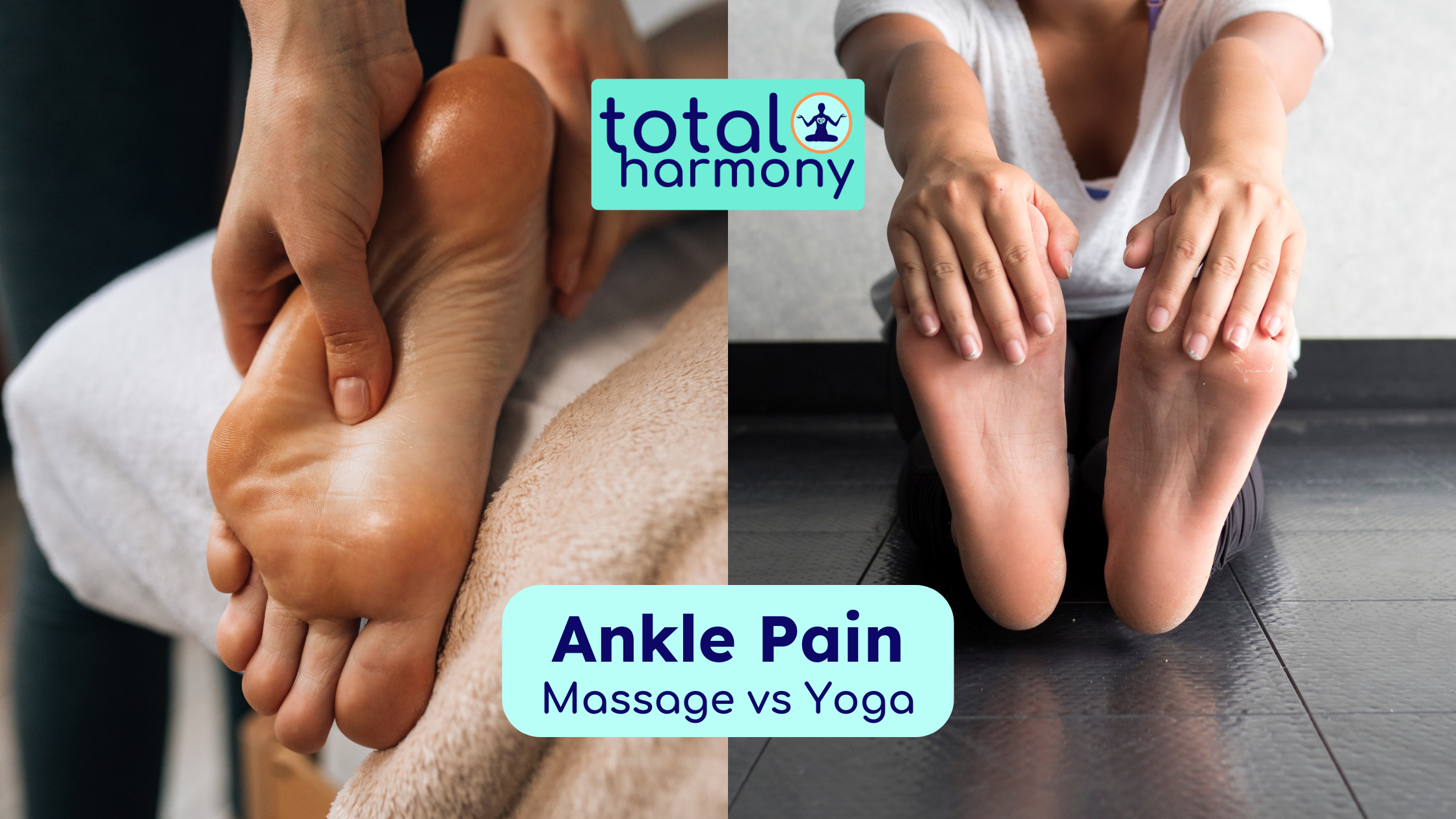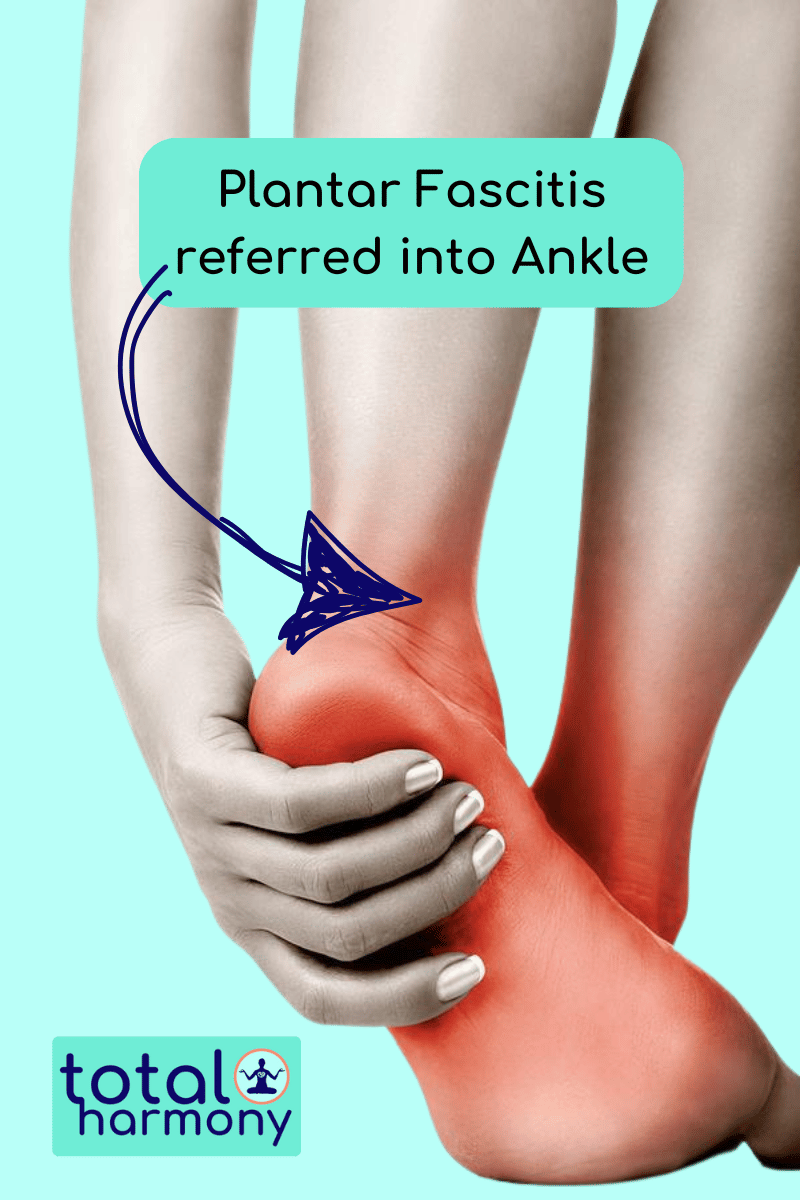How To Fix Ankle Pain Caused By Plantar Fascia
 To fix ankle pain caused by plantar fascia and it's stabbing pain, embrace a multifaceted approach. Enhance flexibility and relieve tension with targeted stretches like heel raises and ankle circles. Try yoga poses such as Downward Dog to improve stability. Thai massage offers relief through gentle pressure on foot points and increased circulation. Be aware of risk factors like flat feet and choose supportive footwear.
To fix ankle pain caused by plantar fascia and it's stabbing pain, embrace a multifaceted approach. Enhance flexibility and relieve tension with targeted stretches like heel raises and ankle circles. Try yoga poses such as Downward Dog to improve stability. Thai massage offers relief through gentle pressure on foot points and increased circulation. Be aware of risk factors like flat feet and choose supportive footwear.
Key Takeaways
- Perform targeted stretching and strengthening exercises to alleviate pain and support ankle healing.
- Incorporate yoga poses like Downward Dog to enhance flexibility and stability for ankle relief.
- Choose supportive footwear to minimize plantar fascia strain and reduce ankle pain.
- Utilize Thai massage techniques to improve circulation and relieve tension in feet and ankles.
- Avoid repetitive activities that exacerbate plantar fasciitis and contribute to ankle discomfort.
Understanding the Connection Between Ankle Pain and Plantar Fascia
When you're experiencing ankle pain, it's vital to understand how interconnected your body is, especially the role of the plantar fascia.
This thick band of tissue runs along the bottom of your foot, connecting your heel bone to your toes. When it becomes inflamed, a condition known as plantar fasciitis, it can lead to significant foot pain and even heel pain that radiates to your ankle and creates difficulty walking.
 It's important to recognize that your ankle supports your foot's movements, and any discomfort in the plantar fascia can disrupt this harmony, leading to ankle pain.
It's important to recognize that your ankle supports your foot's movements, and any discomfort in the plantar fascia can disrupt this harmony, leading to ankle pain.
Identifying Common Causes and Risk Factors
Understanding the link between ankle pain and plantar fascia is just one piece of the puzzle. To tackle plantar fasciitis pain effectively, you need to identify its most common causes and risk factors.
If you have flat feet, you're at an increased risk of experiencing severe ankle pain. The lack of a natural arch can put extra stress on your plantar fascia, leading to inflammation and discomfort.
Additionally, stress from repetitive activities such as running or standing for long periods can exacerbate the problem. Poor footwear choices can also contribute to the risk, as unsupportive shoes fail to cushion your feet adequately.
Being mindful of these factors allows you to take preventive measures, reducing the likelihood of pain and ensuring your safety.
Effective Stretching and Strengthening Exercises
To effectively alleviate ankle pain, incorporating targeted stretching and strengthening exercises into your routine is vital.
These exercises help reduce tension and provide support to your heel and ankle, promoting healing and preventing further injury.
Focus on consistency and proper form to guarantee safety and effectiveness.
Consider integrating the following exercises:
- Heel raises: Strengthen your calf muscles and provide additional support to the ankle.
- Toe stretches: Gently stretch the plantar fascia, reducing discomfort.
- Ankle circles: Improve flexibility and decrease tension around the joint.
- Towel curls: Engage your foot muscles to support the arch and heel.
- Calf stretches: Alleviate tension in the calf, which can impact your heel and ankle.
Yoga To Relieve Ankle Pain and Plantar Fascitis
Although traditional exercises can effectively manage ankle pain, integrating yoga into your routine offers a holistic approach to relief, especially for conditions like plantar fasciitis.
Practicing yoga can stretch and strengthen the muscles around your ankle, reducing pain and inflammation. Specific poses, like Downward Dog and Warrior, encourage flexibility and stability, essential in alleviating discomfort.
As you practice, focus on mindful breathing and alignment to guarantee safety and maximize benefits. Consistent yoga practice not only targets physical symptoms but also reduces stress, which can exacerbate pain.
When you listen to your body, modify poses as needed, and gradually build your practice, you create a nurturing environment for healing. Embrace yoga as a gentle, supportive ally in your journey to wellness.
Total Harmony's easy, at-home relaxing yoga video subscription can make it easy start down the road to relief.
Thai Massage To Relieve Ankle Pain and Plantar Fascitis
When dealing with ankle pain and plantar fasciitis, incorporating Thai massage into your treatment plan can offer significant relief. This ancient technique focuses on applying gentle pressure to specific points on the foot, which can alleviate tension and reduce pain.
By understanding the structured approach of Thai massage, you can guarantee a safer and more effective experience. Techniques used in Thai massage can improve circulation and promote healing, addressing the root cause of your discomfort.
Consider these key techniques:
- Foot pressure: Applying consistent pressure to targeted areas for tension relief.
- Stretching methods: Enhancing flexibility and reducing stiffness.
- Kneading motions: Stimulating blood flow to promote healing.
- Circular movements: Loosening tight muscles and tendons.
- Point therapy: Focusing on specific pressure points to alleviate discomfort.
With these techniques, you can experience a soothing and therapeutic journey toward relief. If these selfcare procedures are not enough, we are happy to evaluate you and help you get more lasting relief at one of our locations in St. Louis, MO or St. Peters, MO.
Frequently Asked Questions
Can Changing Footwear Alleviate Ankle Pain From Plantar Fascia?
Yes, changing your footwear can alleviate ankle pain.
Opt for shoes with good arch support and cushioning, as they help distribute your weight evenly, reducing stress on your plantar fascia.
Make certain your shoes fit well and avoid high heels or unsupportive flats.
Consider using orthotic inserts for added support.
Prioritize comfort and stability, and remember, the right footwear promotes healing and prevents further injury, keeping you safe and pain-free.
Are There Any Specific Dietary Changes to Reduce Ankle Pain?
Imagine Jane, who eased her ankle pain by incorporating omega-3-rich foods like salmon into her diet.
You can try this too, as anti-inflammatory foods may reduce discomfort. Focus on consuming more leafy greens, nuts, and seeds.
Avoid processed foods high in sugar and unhealthy fats, which can exacerbate inflammation.
You're not alone in seeking relief; these dietary changes can offer a safer, natural approach to managing pain effectively.
How Long Does It Typically Take to See Improvement in Symptoms?
You'll typically start seeing improvement in symptoms within a few weeks, but it depends on the severity and your treatment consistency.
Rest, ice, and gentle stretching can speed recovery. Focus on supportive footwear to prevent further strain.
If you don't notice progress after a month, consider consulting a healthcare professional for guidance.
Can Alternative Therapies Like Acupuncture Aid in Reducing Plantar Fascia Pain?
Imagine you're exploring ancient remedies with a time turner.
Acupuncture can be an effective alternative to reduce pain by promoting blood flow and releasing endorphins. You might feel hesitant, but countless studies show it's generally safe when performed by a qualified practitioner.
Acupuncture addresses the root causes of discomfort, aiming for holistic healing. Consider trying it, but always consult with your healthcare provider first to guarantee it's right for you.
Is It Advisable to Use Ankle Braces for Support During Recovery?
When you're dealing with ankle pain, using ankle braces can be quite beneficial. They provide stability and support, reducing strain on affected areas.
Make sure you choose a brace that fits well and doesn't restrict circulation. Pay attention to how your ankle feels; don't ignore discomfort or increased pain.
Conclusion
You've explored the intricate link between ankle pain and the plantar fascia, understanding both the risks and remedies. While stretching and strengthening exercises offer relief, yoga's gentle flow contrasts with Thai massage's deep pressure, providing diverse paths to healing. By embracing these varied approaches, you can tailor a holistic strategy to alleviate discomfort. Remember, addressing the root cause, rather than just the symptoms, empowers you to reclaim mobility and find lasting relief.
